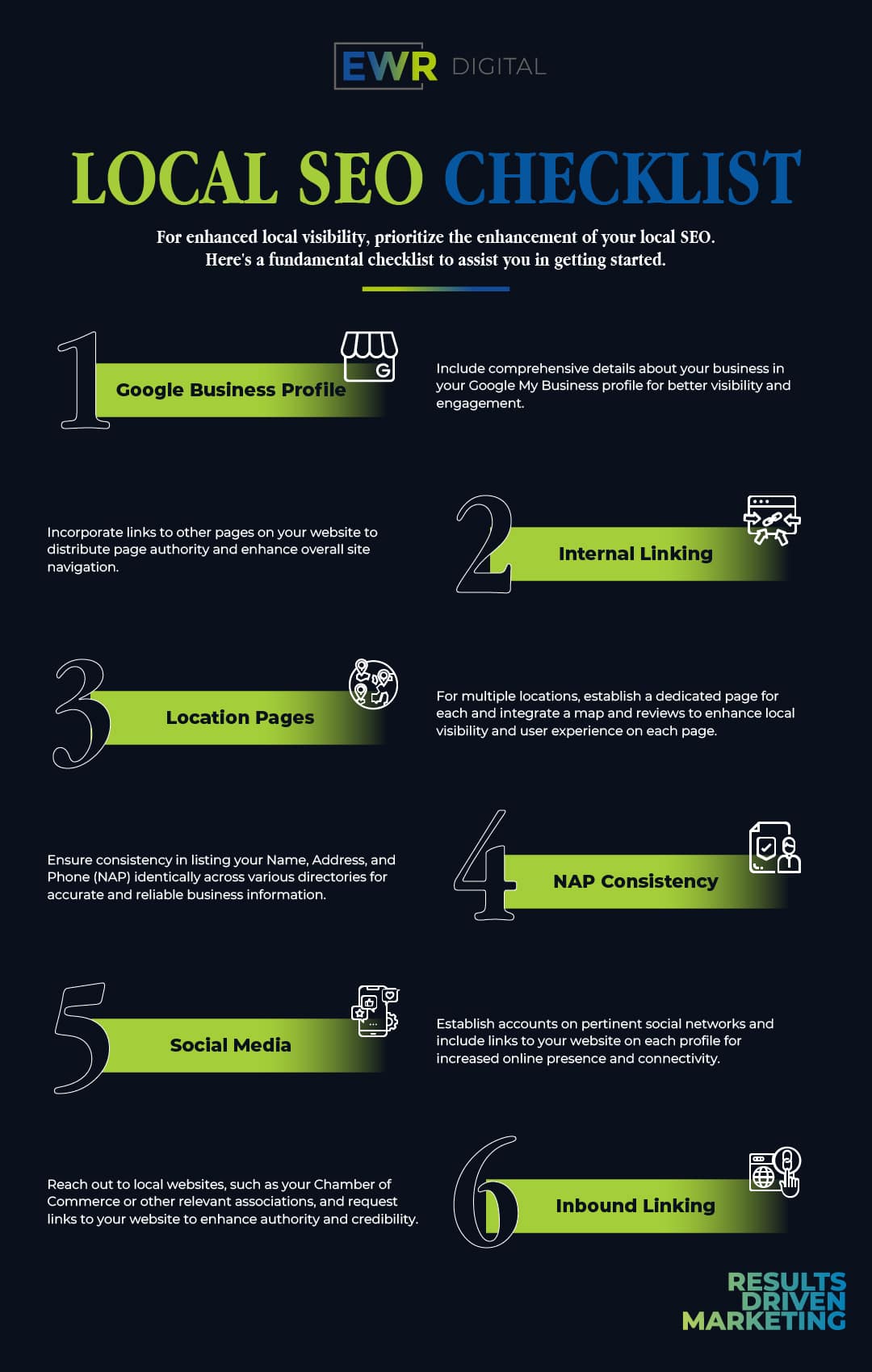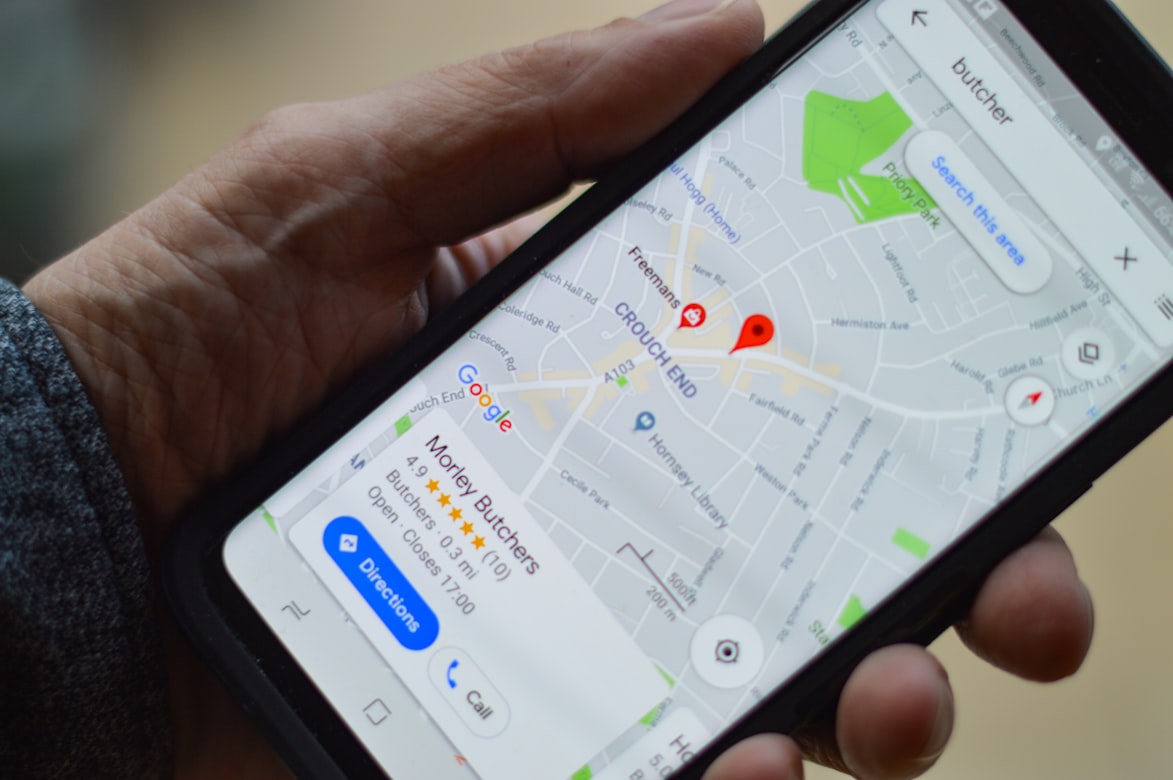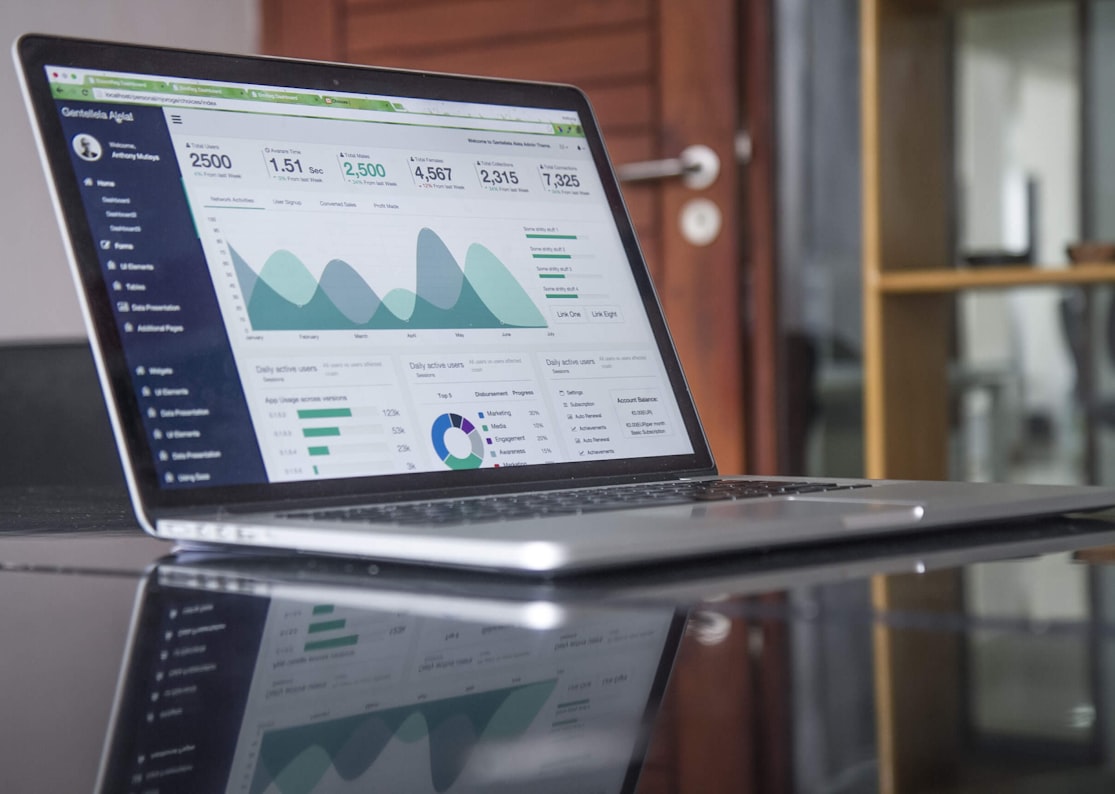
5 Essential Page Optimizations for Local Organic SEO
Local SEO is an important marketing tactic that helps customers find businesses based on their location. It’s especially important for brick-and-mortar businesses to ensure people searching can find them. While many marketers limit their local SEO optimization to maintaining a Google Business Profile, it’s crucial to leverage page optimizations for local organic SEO throughout your entire website. These optimizations provide other crucial signals to search engines that may improve your local rankings and help more potential customers find you.
Local SEO (Search Engine Optimization) is important because it allows businesses to appear prominently in search engine results when potential customers search for products or services in their local area. Local SEO helps businesses to connect with customers in their immediate geographic vicinity, making it an effective way to drive foot traffic to physical stores or increase online visibility for local searches.
Here are some key reasons why local SEO is important for businesses:
- Increased visibility: Local SEO helps businesses appear in search results for local queries, which can increase their visibility and attract more customers.
- Targeted marketing: Local SEO allows businesses to target specific geographic areas, ensuring that their marketing efforts are focused on the customers most likely to convert.
- Improved credibility: A strong local SEO presence can improve a business’s credibility and trustworthiness with potential customers, as it demonstrates that the business is established and reputable in the local community.
- Competitive advantage: Businesses that optimize for local SEO can gain a competitive advantage over other businesses in the same area that do not prioritize local search.
- Mobile-friendly: Local SEO is particularly important for mobile users, as many people use their smartphones to search for local businesses while on the go.
Overall, local SEO is essential for businesses that rely on local customers to drive revenue. By optimizing for local search, businesses can improve their visibility, attract more customers, and gain a competitive advantage over their rivals.
Now, here are some essential on-page optimization tips to consider trying to improve your rankings in the local search results:
1. Make Sure Your GBP and NAP Is Consistent

Image via Flickr by Limelight Leads
It’s important to be consistent with your online presence, especially when displaying your business’ name, address, and phone number or NAP. Include this piece of information throughout your website, in your Google Business Profile, and on your social media accounts, and make sure to write the information the same way in each place. As bots and crawlers scan your various citations throughout the internet, this helps them create connections between them, improving your authority.
There are a few options for where to display your NAP on your website. Standard options may include a contact page and on each service page. However, it may also be useful to include it in your footer. Website visitors always see your footer regardless of the page they’re on, making it easy for them to find your NAP.
I would also say you need to treat your GBP listing as a separate website and fill out all the required information and add all the relevant products or services you are offering.
Filling out the GBP / GMB (Google My Business now Google Business Profile) listing is crucial for local SEO as it is the primary way for businesses to provide Google and potential customers with accurate and up-to-date information about their business and here are some reasons why filling out the GBP is important for local SEO:
- Accurate information: Filling out the GMB accurately ensures that potential customers can find accurate information about a business, such as its address, phone number, website, business hours, and more.
- Increased visibility: When a GMB listing is fully optimized and complete, it can appear in the local pack, which is the section of the search results that showcases the top three local businesses for a specific query. This increased visibility can lead to more clicks and ultimately more customers.
- Improved customer experience: When a GMB listing is complete, customers can find all the information they need about a business quickly and easily. This can improve the customer experience and help businesses build trust with potential customers.
- Insights and analytics: Filling out the GMB can also provide businesses with valuable insights and analytics, such as how many people viewed their listing, how many clicked through to their website, and more. This information can help businesses make data-driven decisions about their local SEO strategy.
- Google Maps integration: A fully optimized GMB listing can also appear on Google Maps, making it easier for potential customers to find a business and navigate to its physical location.
As a business providing accurate and up-to-date information to potential customers, increases visibility in search results, improves the customer experience, provides valuable insights and analytics, and integrates with Google Maps is key.
2. Improve On-Page Content
Image via Unsplash by henry perks
Create content that both showcases your business’ strengths and services and signals to search engines that you and your website are local authorities. Follow SEO best practices for writing and updating your on-page content. For example, naturally incorporate keywords throughout the content, but avoid overusing them and creating potentially spammy content.
Pair the keywords with your location. This helps ping your website when users search for something near them, such as “digital marketing agency near me.” Consider localizing content further by discussing local landmarks or why a certain service is important for residents of that location. It may also be useful to research the area and use jargon that residents may use.
Approach your content by thinking like a potential customer. Consider what they may search for, and use that to guide what you write. Ask yourself questions like whether they’re more likely to search a general city or specific neighborhoods when looking for services. Use this to guide how you refer to locations, and try to include related locations throughout your content naturally.
Let’s say there’s a dentist wanting to advertise their teeth whitening services in Houston. They may focus on targeting “teeth whitening in Orlando” as their main keyword. However, they might also mention places in the greater Houston area that may want these local services on the same content page, such as “teeth whitening in the woodlands” or “teeth whitening in Tomball.”
3. Optimize Header Tags
Optimize the header tags on your website. These tags guide your reader, help site crawlers understand the structure of your website, and provide you with another opportunity to use keywords naturally. Be sure to create relevant header tags without the need to feel like you have to “keyword stuff”.
Optimizing the headers on the target page for Google Business Profile (GBP) is important because it helps to ensure that your GBP listing is relevant and informative to both Google and potential customers.
Headers are important because they provide a quick and easy way for Google’s algorithm to understand the content of your page. By using relevant and descriptive header tags, such as H1 and H2, you can help Google determine the primary topic of your page and the subtopics that support it. This can improve the overall SEO of your page, making it more likely to appear in relevant search results.
Optimizing your headers for GBP can also help to provide a better user experience for your potential customers. By using clear and descriptive headers, you can quickly convey what your business offers and the benefits of choosing your business over competitors. This can help to increase engagement and conversions, as well as improve your overall online reputation.
4. Set Up Internal Linking
Use internal linking throughout your website to guide readers to other areas of your website that may interest them. One option that may help with on-page optimizations for local organic SEO is to use the names of locations as anchor text for these links. Each link may then go to a respective contact or location page. Make sure to think about you site architecture.
Internal linking is one of the most important aspects of website design and content creation. It involves connecting different pages within your website to create a seamless user experience for visitors. By doing so, you can improve navigation on your site while also boosting its search engine optimization (SEO) potential.
One key benefit of internal linking is improved user experience. When users visit your site and easily navigate through it without getting lost or confused, they are more likely to stay longer and engage with your content further. This increased engagement can lead to lower bounce rates as well as higher conversion rates over time.
Another advantage of internal linking is increased page authority in search engines like Google or Bing. When multiple pages link together within a website structure hierarchy, they share their page authority which helps boost individual rankings in SERPs (search engine results pages). As such, having strong interlinking between relevant webpages will help increase visibility online by making them easier for people searching specific keywords related topics covered on those linked-to-pages! Better crawling & indexing: Search engines crawl websites looking for new information all the time; however if there aren’t any links pointing towards certain parts then these areas may not be discovered at all! Internal links ensure every part gets crawled/indexed properly leading better SEO performance overall Higher ranking potential:
Link equity refers how much value each webpage has when it comes down being ranked high up among other similar sites/pages competing against yours – this means distributing link equity throughout various sections via strategic placement could potentially give some extra edge needed push ahead competitors who lack proper inter-linking strategies themselves! Increased traffic:
Finally yet importantly enough – driving targeted traffic directly from one section/page onto another using hyperlinks placed strategically across entire domain/site architecture leads greater exposure opportunities than relying solely organic searches alone would provide otherwise. In conclusion, internal linking is a crucial aspect of website design and content creation. It helps improve user experience by making it easier for visitors to navigate your site while also boosting SEO potential through increased page authority, better crawling & indexing capabilities as well as higher ranking potential overall! By implementing effective interlinking strategies across all relevant pages within your domain/site architecture you can drive targeted traffic directly from one section/page onto another leading greater exposure opportunities than relying solely organic searches alone would provide otherwise.
5. Review the Local Business Schema
Schema markup refers to microdata on your website that helps search engines understand it. Local business schema specifically helps bots and crawlers understand more about your business, such as who you are, what you do, where you are, and why people trust you. It also provides you with control over your information, helping ensure accuracy and consistency with your online presence. Some things you may include in your local business schema include addresses, social media accounts, hours of operation, and information that may not live in on-page content on your website. Think about “organization schema” and other types that might fit your business.
How Will I Know If Local SEO Is Working?
Once you develop and implement your local SEO strategy, on your own or with the help of a SEO agency. it’s vital to monitor its success continually. This helps you identify opportunities for improvement and learn what’s working well. Here are some important tools you can use to monitor the success of your on-page optimizations for local organic SEO:
Local Search Results Tools
When evaluating the success of local SEO strategies, it’s essential for you to be able to view the actual SERP of the location. There are a variety of tools that allow you to mimic SERPs for targeted areas. Some of these tools include BrightLocal, Local Falcon, and Local Viking.
Each of these tools offers unique features, but they allow you to establish the parameters for your search with a certain keyword and specific area. You’re also able to specify whether you want to view results from desktop or mobile searches, which may be especially helpful for assessing the success of your location-based content updates. Some tools also allow you to view your results on maps or be as specific as using ZIP codes in your searches.
Geo-Grid Local Ranking Tools
Image via Unsplash by Carlos Muza
Geo-Grid local ranking tools offer visual results when evaluating your local SEO performance. Tools like Local Falcon and Local Viking provide you with map results in a specific area and allow you to monitor the results over time. You can also schedule keyword-based scans that capture results automatically and store them for you to review. This is helpful for gathering comprehensive data and assessing specific aspects of your local SEO optimizations, such as your title tags and content.
Google Business Profile Analytics
Be sure to check your Google Business Profile analytics often. Successful optimizations should affect your metrics positively, such as improving calls, requests for directions, or click-throughs to your website. These changes in traffic suggest an improvement in visibility, which may show Google your website is authoritative, helping it continue to move up the rankings. Remember that the map ranking move much faster than national SEO and mean times people prefer the maps over other types of searches so keep this mind.
Implementing these on-page optimizations for local organic SEO might help you better connect with your customers. They may position your company as an expert, motivating more people to choose you during their search. As a result, both you and your customers can have a win-win situation.


